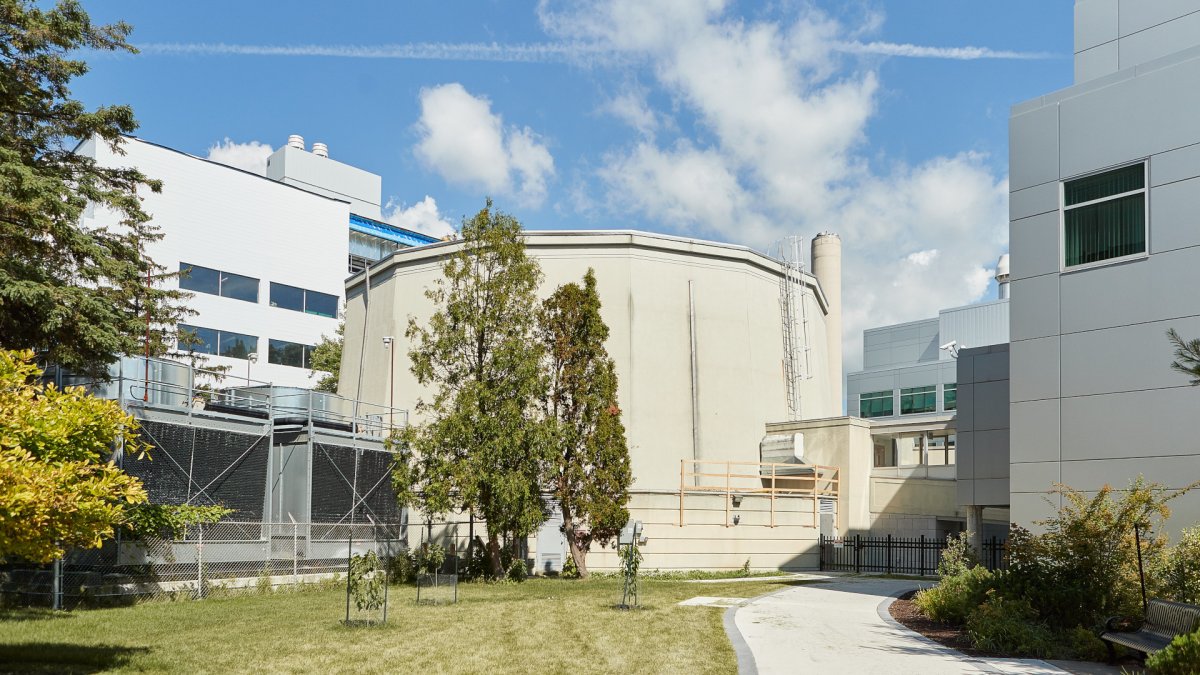An executive with the McMaster Nuclear Reactor (MNR) says a multi-million-dollar investment from Ontario for expansion means local production of medical isotopes could increase by about three times what it is now.

The facility is one of the beneficiaries of the Ford government’s $850-million boost in hospital funding via the 2023 budget, and will see $6.8 million for upgrades to the Hamilton facility.
The provincial cash, spread over a three-year period, will contribute to a $25-million project allowing the MNR to operate 24 hours a day, five days per week.
“From the reactor (we’re) supporting or producing material that provides cancer treatment for over 70,000 patients a year, and there’s the potential in this expansion to increase that … by up to three times,” McMaster University’s vice-president of nuclear research Dave Tucker revealed.
The change will also give the facility the capacity to produce a new suite of medical isotopes for emerging new treatments, including lutetium-177 (Lu-177), used in treating cancer, according to Tucker.
“We’ll be supplying commercial markets with the isotopes to get drugs into the hospitals,” he said.
The MNR is a world supplier of iodine-125 (I-125), which can be used in imaging and radiation therapy treating a number of conditions, including prostate cancer, uveal melanomas and brain tumours.
It’s also used in vaccine and diagnostic research with potential applications for COVID-19.
The university’s reactor first began operating in 1959 and currently produces half of the world’s supply of I-125, providing cancer treatments for about 70,000 patients a year.
In late 2019, it was the only facility producing I-125 after the research reactor in Uzbekistan shut down temporarily in order to facilitate repairs.
The MNR also produces holmium-166, also used in medical isotopes used to treat cancer.
Tucker says the world of isotopes is one of perishables as I-125 only lasts 60 days before reaching its half-life – when half of the radioactive atoms reach decay.
The MNU going 24 hours a day not only will allow for increased diversity and amount of isotopes produced, but may also save some potential losses in creation.
“They are dying away even as you make them,” said Tucker.
“When we shut down every night, for isotopes with sort of medium half-lifes, we lose all (that) production.”
The program is hoping to change to 24-hour-a-day operation by the end of this year and has already started to recruit additional staff, including a maintenance, safety and health physics team, management and a research group.
- Roll Up To Win? Tim Hortons says $55K boat win email was ‘human error’
- Bird flu risk to humans an ‘enormous concern,’ WHO says. Here’s what to know
- Halifax homeless encampment hits double capacity, officials mull next step
- Ontario premier calls cost of gas ‘absolutely disgusting,’ raises price-gouging concerns










Comments